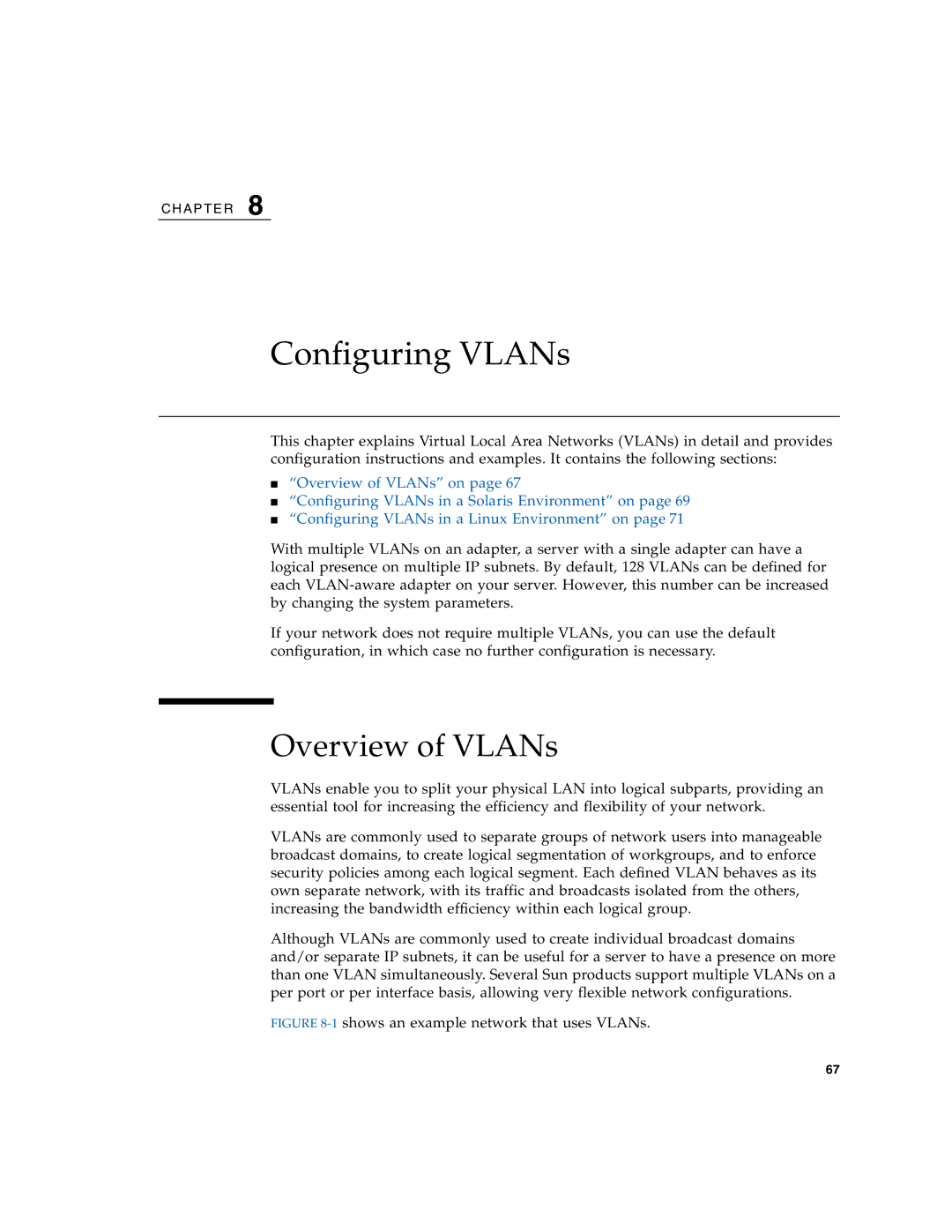
C H A P T E R 8
Configuring VLANs
This chapter explains Virtual Local Area Networks (VLANs) in detail and provides configuration instructions and examples. It contains the following sections:
■“Overview of VLANs” on page 67
■“Configuring VLANs in a Solaris Environment” on page 69
■“Configuring VLANs in a Linux Environment” on page 71
With multiple VLANs on an adapter, a server with a single adapter can have a logical presence on multiple IP subnets. By default, 128 VLANs can be defined for each
If your network does not require multiple VLANs, you can use the default configuration, in which case no further configuration is necessary.
Overview of VLANs
VLANs enable you to split your physical LAN into logical subparts, providing an essential tool for increasing the efficiency and flexibility of your network.
VLANs are commonly used to separate groups of network users into manageable broadcast domains, to create logical segmentation of workgroups, and to enforce security policies among each logical segment. Each defined VLAN behaves as its own separate network, with its traffic and broadcasts isolated from the others, increasing the bandwidth efficiency within each logical group.
Although VLANs are commonly used to create individual broadcast domains and/or separate IP subnets, it can be useful for a server to have a presence on more than one VLAN simultaneously. Several Sun products support multiple VLANs on a per port or per interface basis, allowing very flexible network configurations.
FIGURE 8-1 shows an example network that uses VLANs.
67
